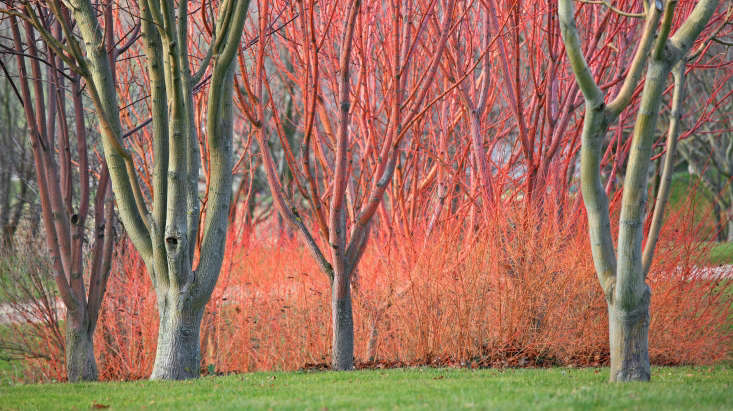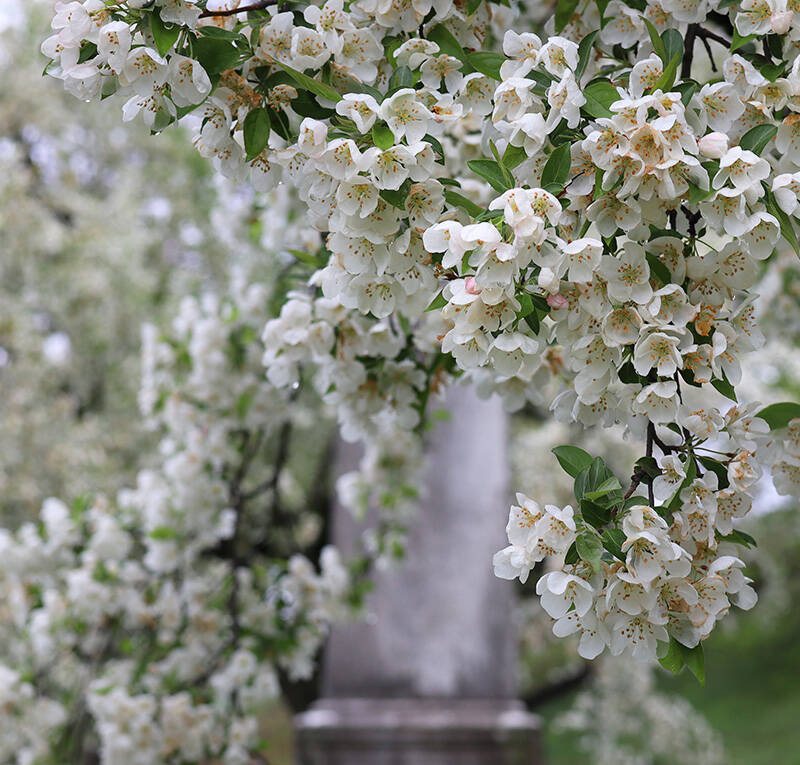For many gardeners, winter means a break from endless garden jobs and a swift retreat indoors to sit by a fire and ponder catalogs and planting plans. But for others, who have meticulously planned their gardens to shine in winter, the season can deliver dramatic colors, eerie textures, and mesmerizing combinations—and a reason to venture outdoors or, at least, admire the view from the fireside.
French photographer Cedric Pollet has spent nine years documenting some of the most beautiful of these spaces and has gathered them together in Winter Gardens: Reinventing the Season. For anyone contemplating adding some winter interest to a garden, it’s a must-read.
Photography by Cedric Pollet.


The inspiration for the book came from Jardin de Bois Marquis, Christian Peyron’s garden in the Rhone valley, and in particular a stunning planting of snakebark maples (Acer x conspicuum ‘Phoenix’) and fiery red dogwoods (Cornus sanguinea ‘Winter Flame’) a dazzling display only heightened by snow on the ground.
Dogwoods, coppiced annually to encourage fresh new wood each year, are invaluable in the winter garden and there’s a rainbow of colors from the lime green to dark purple and everything in between. But it’s the fiery red dogwoods that tend to be most popular, including Cornus sanguinea ‘Midwinter Fire’ which gradually turns from yellow at the base to red at the tips – that are often combined with white birches.

The incredible coppers and burnished orange tones of so many of the outstanding winter trees (Prunus serrula, Acer griseum, and Betula albosinensis are some of the best-known) make stunning and uplifting scenes in winter but of course they are only one side of the story. Just as effective are the snowy white birches (especially when planted to dazzling effect with wispy, ghoulish grasses) which is why Betula utilis var Jacquemontii has become such a winter garden stalwart.

Pollet offers a thorough roster of support acts too. There are winter-flowering trees and shrubs, berries, bamboos, grasses, heathers, useful evergreens, and colorful conifers.


Elsewhere, Pollet shows how the pretty pink blossom of Prunus mume Beni Chidori is a perfect pairing with the pink flowers of Helleborus x lemonnierae underneath.
The other great thing about winter gardens is that with a dusting of frost or snow, the garden becomes a magical space. Plant the right things and you can have structure, color, texture, and even scent through to early spring.
N.B.: See more of our favorite wintry gardens:
- A Winter Berry Garden to Feed Birds.
- Ask the Expert: Winter Garden Tips from Stone Barns Center.
- Garden Visit: At Home at Juniper Hill Farm in New Hampshire.













Have a Question or Comment About This Post?
Join the conversation (0)